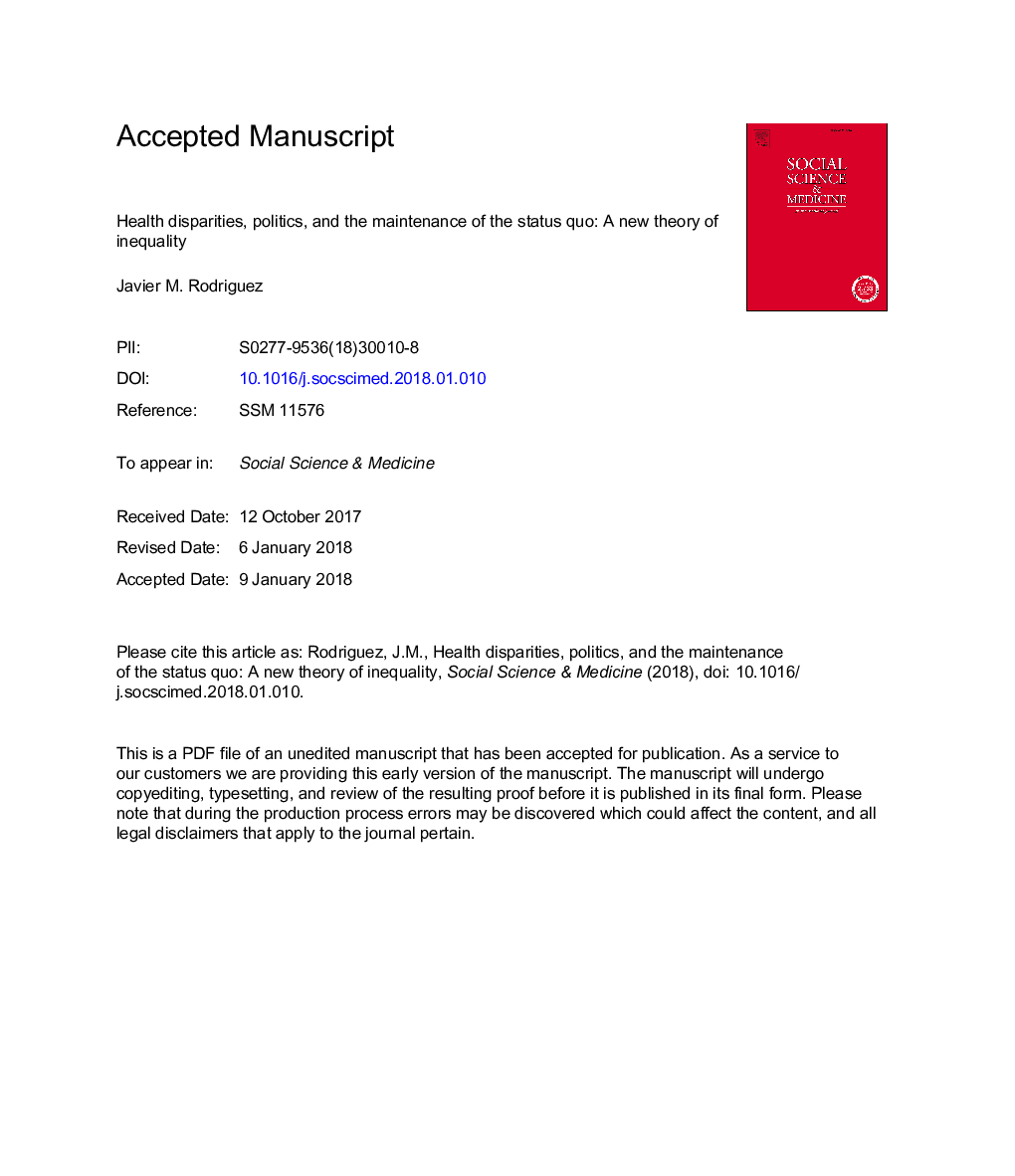| Article ID | Journal | Published Year | Pages | File Type |
|---|---|---|---|---|
| 7328340 | Social Science & Medicine | 2018 | 32 Pages |
Abstract
Individuals participate in politics to influence the politicians that prescribe the policies and programs that distribute the public goods and services that shape the social determinants of health. But the opportunity to participate in politics is conditional on survival, and in the U.S., the haves enjoy a significant survival advantage over the have-nots. This process can be detected looking at the relationship between age and participation: It is inflated by the fact that, as time progresses, a higher proportion of low-SES, low-level participation individuals die and are therefore excluded from the available pool of participants faster than high-SES, high-level participation individuals. We analyze this mechanism applying propensity scores matching and multivariate regressions on data from MIDUS I (Midlife in the United States: A National Study of Health and Well-being) and its 10-year mortality follow-up. Results show that health differences between 10-year survivors and non-survivors explain 56% of their differences in socio-political participation. Survivors participate at higher levels than non-survivors across all age groups and SES levels; without detrimental differences in health, individuals would participate 28% more as they age. The same disadvantaged individuals whose increased participation would pressure for redistributive policies are those who die off from the available pool of participants at much higher rates than socioeconomically advantaged individuals. The proposed conceptual model helps to explain how, through the early disappearance of the poor, continuing socio-political participation of high-SES survivors helps to perpetuate inequality in the status quo.
Related Topics
Health Sciences
Medicine and Dentistry
Public Health and Health Policy
Authors
Javier M. Rodriguez,
